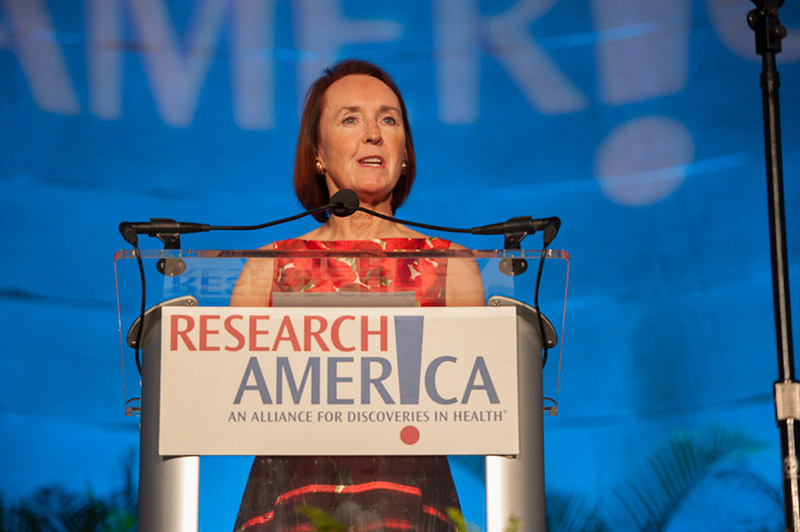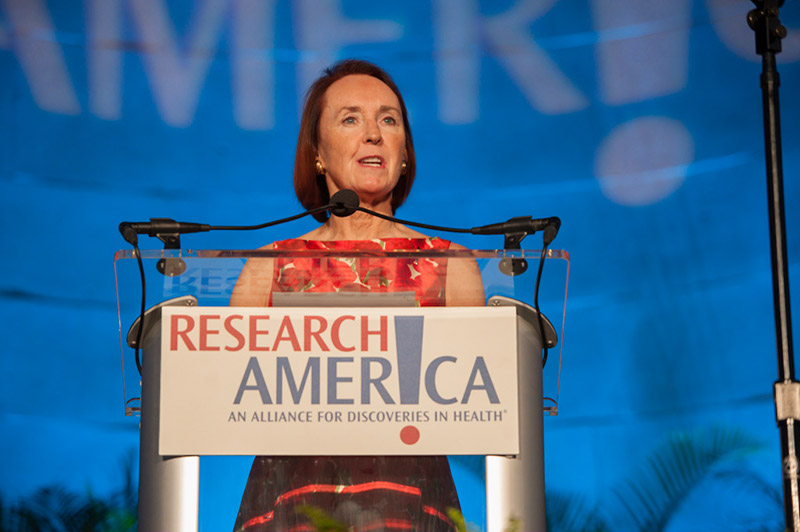Rallying for Research

 Dear Research Advocate:
Dear Research Advocate:
Research!America was proud to be one of more than 100 groups involved in last weekend’s second March for Science, which took place in over 500 locations worldwide. I had the opportunity to speak at the terrific pre-March rally hosted by AAAS and to talk to the Washington Post and several other media outlets — it won’t surprise you to know that I reinforced the need for science and scientists to be more visible, not just once a year at the March, but on a regular basis. It comes down to this: to influence a conversation, an opinion, a policy or all three — it is necessary to engage; it’s so important to regularly say and convey to the American public, “I Work for You.”
Speaking of enhanced visibility, yesterday we held a joint webinar with the Society for Neuroscience (SfN), focused on community engagement and advocacy strategies scientists can pursue to engage the public (check out a video recording of the webinar here). SfN early-career policy ambassador, neuroscientist Dr. Monica Linden; Cynthia Gibbs, founder, Science Pub RVA; and Dr. Rick Karnesky, “co-boss” of Nerd Nite East Bay shared insights and specifics about creating science-focused events that attract diverse audiences. Our next webinar on June 1 is about measuring advocacy outcomes. Join us!
In my last two letters, I mentioned the possibility of retroactive cuts or “rescissions” to FY18 spending. While most press reports say these cuts are unlikely to take place, ignoring the driver behind this would be a mistake. Bloomberg Government reports that appropriators are exploring the idea of bringing a series of minibus spending bills up for a vote beginning in June. Talk of rescissions and line item vetoes suggests that a series of minibus spending packages could pose a real threat by separating defense from non-defense, with increases in the former paid for by cuts in the latter. We’re watching this closely for new developments.
A further observation on defense and non-defense funding: at last evening’s ACT for NIH reception honoring Congressional champions, ACT’s Chairman Jed Manocherian set the stage with a call for ‘restoration’ of NIH purchasing power. His comments reminded me of language often employed by advocates for defense spending — to maintain our ability to respond to the existential threats of our times, it is imperative to maintain world leading capacity.
Speaking at the reception, Senator Roy Blunt (R-MO), Congressman Tom Cole (R-OK) and Congresswoman Nita Lowey (D-NY) conveyed their determination to continue the momentum of strong support for NIH. Another $3B increase was more than ‘in the air,’ it was palpable!
It’s a given that healthcare delivery should optimize the use of healthcare dollars, based on evidence, but that isn’t close to the standard today. There is so much still-untapped wisdom in health economics and health services research. Duke-Margolis and other expert groups are doing some terrific work in the area of value-based reimbursement that starts and ends with what best serves patients. If you are a Research!America alliance member, mark your calendar for noon on May 22nd. Greg Daniel from the Duke-Margolis Center for Health Policy is joining us for lunch and a conversation about value-based reimbursement. More details next week on this…
A mosaic of powerful stories illustrating why funding for research is so critical has been released by Autism Speaks, a member of the Research!America alliance. April is autism awareness month. A number of comorbid medical conditions are associated with autism spectrum disorders (ASD), which affect 1 out of every 68 individuals. Epilepsy, for instance, affects up to 33% of those with autism (compared to 1–2% of the general population). For more about the prevalence and severity of this spectrum of conditions, check out our autism fact sheet.
Sincerely,
Mary Woolley




